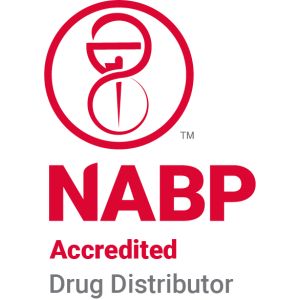Five Reasons Why Supply Chain Visibility Matters in Medical Device Manufacturing
You’ve heard the saying “what you don’t know can’t hurt you.” While it might be the case for feelings, what you don’t know or don’t see will definitely hurt your supply chain—and, by extension, everything about your business.
Without good visibility into your complex, interconnected supply chain, risk increases, from ensuring regulatory compliance to managing lead times to meet customer demand. In addition, lack of visibility hampers a business’s ability to respond quickly to disruption. Given all that is in play in the medical device industry, it’s more important than ever for OEMs to prioritize and continuously advance their supply chain visibility. In this article, we will look at current trends, five reasons why it matters more than ever today, and how an expert partner can help OEMs improve their supply chain visibility.
Defining supply chain visibility
First, supply chain visibility is the ability to trace products through the entirety of your supply chain, from inbound materials to outbound goods. In a multi-tier supply chain network like medical device manufacturing, supply chain visibility encompasses everything from manufacturing to aftermarket services including logistics and distribution.
Trends in supply chain visibility
Today we live and work in what seems like the Supply Chain Era. For more than three years, medtech companies have prioritized rebuilding and strengthening their supply chains after continuous change. The quest, though, continues—because new pressures and risks are continually emerging, like trends toward circular packaging and continued high inflation amid ongoing labor and material shortages.
In addition, even though they might be more aware of them, manufacturers have not really “solved” their visibility problems. Research focused on supply chain resilience from McKinsey in late 2020 affirmed that “medtech manufacturers rarely have strong visibility into their supply chains past the immediate supply base. And even for these tier-1 suppliers, few companies monitor a holistic set of factors, including ones with strong predictive capability.” Research from Deloitte in 2022 underscored that progress in supply chain visibility remains elusive, with just 15% of chief procurement officers reporting having visibility beyond tier 1. Against this, the Global Supply Chain Pressure Index indicates that supply chain disruption continues to be higher in late 2023 than at any other time in the past decade.
Why is gaining supply chain visibility so difficult? For many industries, including ours, the answer comes down to barriers. Barriers between systems cause gaps and data delays. Barriers between organizational functions like marketing, procurement, planning, and logistics contribute to a lack of alignment and process delays. Add to this that many organizations still rely on historical processes because it can be so costly and time-consuming to build new systems and workflows, and it becomes easier to see why so many OEMs are stuck.
In short, despite the imperative to create more visibility, many OEMs continue to struggle, relying on conventional planning applications and approaches rather than taking a new approach to their supply chain. That’s a risk, as supply chain visibility touches five key areas related to OEMs’ success.
Five reasons why supply chain visibility matters for medical device manufacturers
- Ensuring regulatory compliance: Supply chain visibility helps OEMs meet regulatory standards that ensure product safety and quality to uphold patient safety. Supply chain visibility is essential to ensure compliance with component sourcing and traceability, especially as standards and technology will continue to evolve.
- Enhancing product traceability: Traceability is key not only for compliance but to ensure swift response in the reporting of adverse events or in the circumstances of a product recall. Heightened supply chain visibility enables OEMs to proactively put scenario response planning into play to recall products and ultimately protect patient safety and brand reputation.
- Mitigating supply chain risks: OEMs face an array of potential supply chain risks, from material shortages to geopolitical upheaval. Better supply chain visibility helps OEMs better protect their businesses from supply chain shocks through planning and preparation for proactive risk management and mitigation strategies.
- Improve operational efficiency: Strong supply chain visibility helps OEMs optimize their inventory management and respond to customer demand. Visibility powers better decision-making around production planning and distribution; for example, better visibility into supplier networks and inbound supply can help manufacturers coordinate production schedules and manage lead times. A waterfall effect follows, with optimized production and reduced carrying costs on inventory.
- Improved customer trust: Today customers across industries expect transparency and accountability, including from medical device manufacturers. Supply chain visibility helps OEMs better service accounts and ensure case support. It also helps OEMs deliver on their promise to patients by upholding quality and safety.
Improving supply chain visibility
Better supply chain visibility is a competitive advantage for OEMs, but many still struggle to achieve it given barriers between functions, capacity strain, and more. Many manufacturers, though, could overcome these challenges with a key shift: centralizing supply chain management with a single expert partner.
Centralizing supply chain management with a single point of contact can lower some of the ingrained barriers and bring together functions, departments, and processes to create greater visibility and control throughout the supply chain. This centralization can increase operational efficiency and cost savings while lowering risk and improving business performance. For many OEMs, this strategic approach to supply chain management can help them attain better visibility, enhance collaboration, and respond more quickly to future threats.
Ultimately, working with an expert partner via a service like Millstone’s Tier 1 can help OEMs build a more resilient supply chain, with greater end-to-end visibility—unlocking all the business benefits from compliance to delivering on customer expectations.
Millstone offers post-manufacturing and aftermarket services to more than 50 customers, including some of the top 10 orthopedic companies in the world. We are constantly evolving our processes and services to help OEMs achieve sustainable success. We offer packaging, logistics, and testing—all with an unparalleled focus on quality.
What could we help you do better? Learn more at https://millstonemedical.com.
Comments are closed.



